Around the time that DXOMARK was beginning to study the evaluation of image quality of home surveillance cameras, one of its new employees installed a video-camera system in his new apartment. The employee was new to the Paris region, and he was eager to try out a home security system, especially since he lived on the ground floor of an apartment complex. It quickly turned out that having the security system at home was a smart decision.
About a week after installation, the employee witnessed his apartment being burgled, live on his smartphone — he even had a conversation with the intruder! And thanks to the surveillance camera, it was all caught on video. The police intervened, and although the intruder was never caught, a video of him in the apartment was kept as evidence.
With incidents like that, it’s not hard to see why home security cameras are a big and growing business. According to a KBV Research market report, the global smart home security cameras market size is expected to reach $10.4 billion by 2026, rising at a market growth rate of 16.5% (compounded annual growth rate) during the forecast period. Security issues in developing countries are a key driver of the growth of the home security camera market, according to the research.
In an era of connectivity, this growth is in parallel with the growing number of smart home devices hitting the market every day. Most security cameras, for example, can work with Amazon Alexa, Google Assistant, and other virtual assistants.
The main reason for getting a home security camera system is to deter the possibility of a home invasion. Burglars are less likely to try to break into a house knowing that their actions are being recorded or being broadcast on a smartphone or tablet.
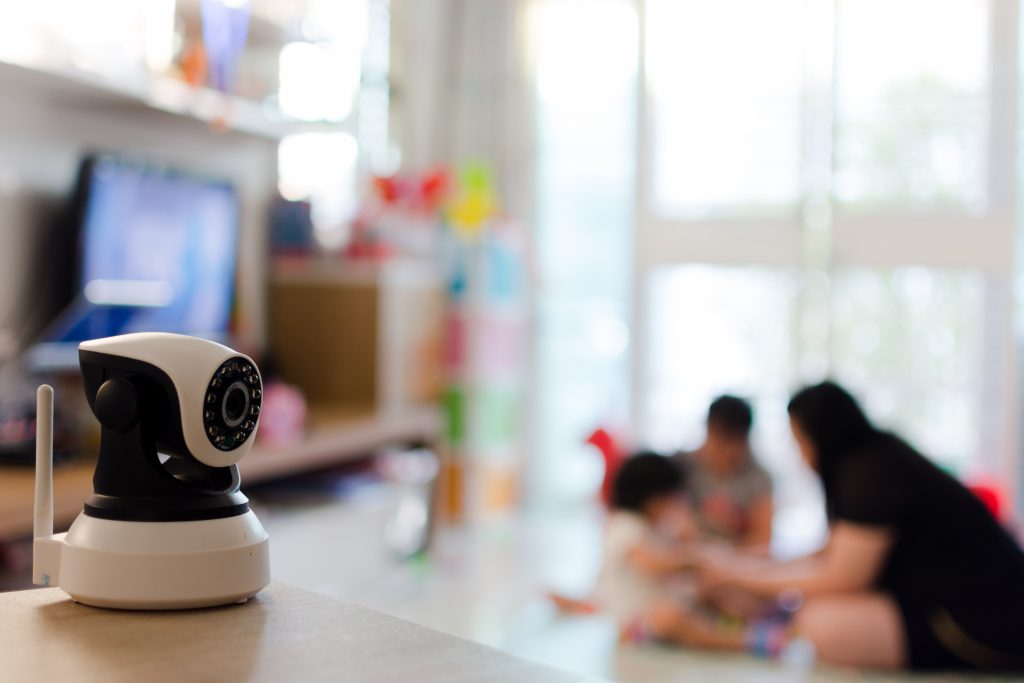
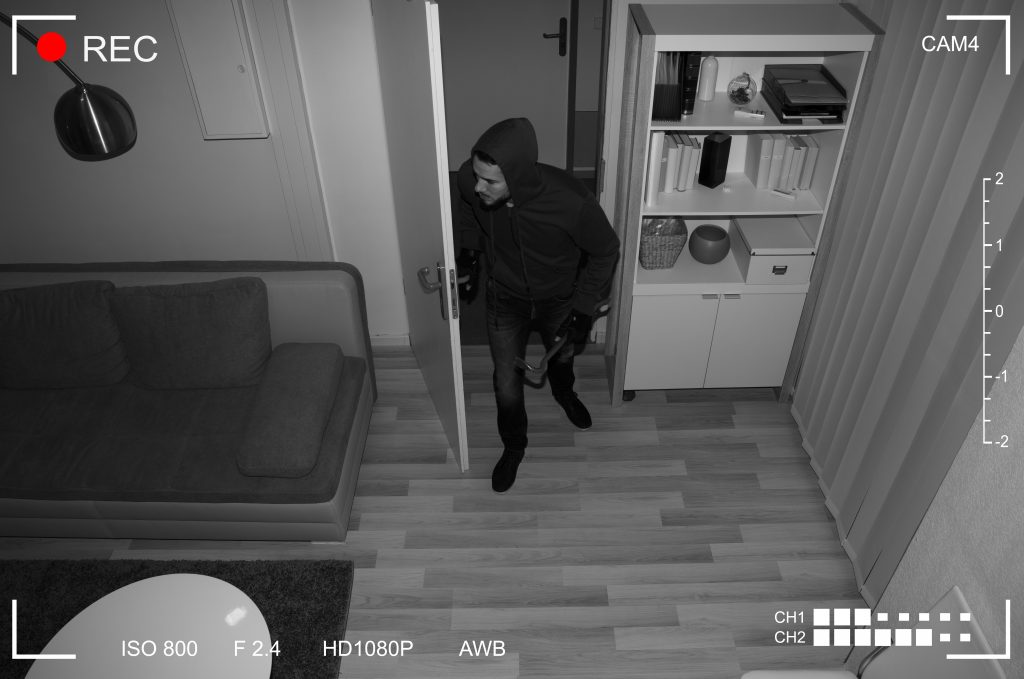
While home security is the main use case for surveillance cameras, there are several secondary use cases that make a home-camera system practical to have. One particularly common use case is being able to interact remotely with a delivery person, or check on delivered packages that get left at the door. Another secondary use case is pet watching. Now that many workers are returning to the office after having worked from home because of COVID, pets who had become accustomed to having their favorite humans at home might begin to suffer from separation anxiety. An indoor home camera system could help people check in on their pets during the workday, and they can even talk to them via the sound system. Another use case is to monitor who enters the home during the day, whether it’s the kids coming home from school with their friends or the cleaning lady.
Types of home security cameras
The main types of home security cameras are outdoor, indoor, and doorbell cameras. Outdoor cameras monitor the activity in the yard or the driveway, while doorbell cameras allow you to see and even talk to the person at your door, whether it is a delivery person or an unexpected visitor, even if you are not home. Indoor cameras record activities in the rooms they are placed in, such as the living room, kitchen, or bedroom—or anywhere a home intruder might be able to enter from the outside.
The choice of which type of camera to get depends on its intended use. But in general, there are some main common qualities of any type of home security camera. They must provide:
- Good detail rendering at long distances, in the case of outdoor cameras, and at short distances, in the case of indoor and doorbell cameras.
- Wide dynamic range
- Large fields of view
- Night vision
- Audio capabilities, particularly for indoor and doorbell cameras
Challenges and limitations
Home security cameras are usually small so that they can be discreet and unobtrusive. The sensors are about the same size as those found in smartphones, meaning they are much smaller than what you find in DSLR cameras. This presents some major challenges and limitations when it comes to image quality. Small apertures limit the flow of light to the sensor, which affects exposure and dynamic range. Small sensors mean less light is captured, which could affect the final image.
Another challenge, especially for outdoor cameras, is capturing a wide field of view. Moreover, they use fisheyes lenses, which have smaller apertures, to cover a wider field of view. Fisheye lenses can sometimes create artifacts like distortion and color fringing.
The third challenge is detection, and image quality plays a role in this. The most important and basic function of home security cameras is that they must be able to quickly and accurately detect relevant motion in a use case such as a home invasion. The keyword here is relevant, and image quality from the camera is crucial in this case. If the image quality is poor, the security system could easily send too many false alerts, or worse, it might not send any at all because it did not detect anything.
The way a home security camera is installed also presents a challenge. Is it wired or battery-powered? A system that is battery-powered could be placed anywhere, but it could potentially limit the camera’s performance in terms of image processing so as to not drain the battery too quickly. A system that requires to be plugged in, on the other hand, might have to be placed in a less than ideal location and might struggle to capture good images. Other installation considerations include the ease of setup, the network, and power, application control as well as cloud usage and storage.
Another constraint on image quality is the network the security system runs on. The uploading of recorded images is subject to compression, which affects the final image, especially on battery-powered systems. The quality of the network will also affect the final image. If two bars of wifi are lost during an upload, compression artifacts will most likely show up in the final image.
Home surveillance cameras also face audio quality challenges and limitations. What’s important is whether voices are intelligible in these kinds of products—in playback and recording. Outdoor cameras are prone to artifacts such as wind noise, and as a result, speech becomes hard to understand. In the case of a doorbell camera, the audio quality is affected by the distance of the speaker to the device. The loudness of the captured of voices is important, especially in comparison with the volume of the background (Signal to Noise Ratio) which may be affected either by the distance from the user to the device or by the environmental conditions (wind, rain, road noises, …).
Doorbell benchmark
With image and audio quality being such an integral part of home security systems, it seems natural that DXOMARK, an industry leader in image and audio quality evaluation, would develop a testing protocol for the different types of home surveillance systems.
For our first image quality tests on the home surveillance market, we tested 4 doorbell cameras: Google Nest Doorbell (battery), Google Nest Hello (wired), Ring Video Doorbell 4, and the Arlo Essential Video Doorbell. All were battery-powered except for the Google Nest Hello. Of the four doorbell cameras, only the Google Nest Doorbell provided a vertical field of view instead of a horizontal one. A vertical field of view provides a head-to-toe view of the person in front of the camera as well as a view of the ground, where delivered packages are likely to be left.
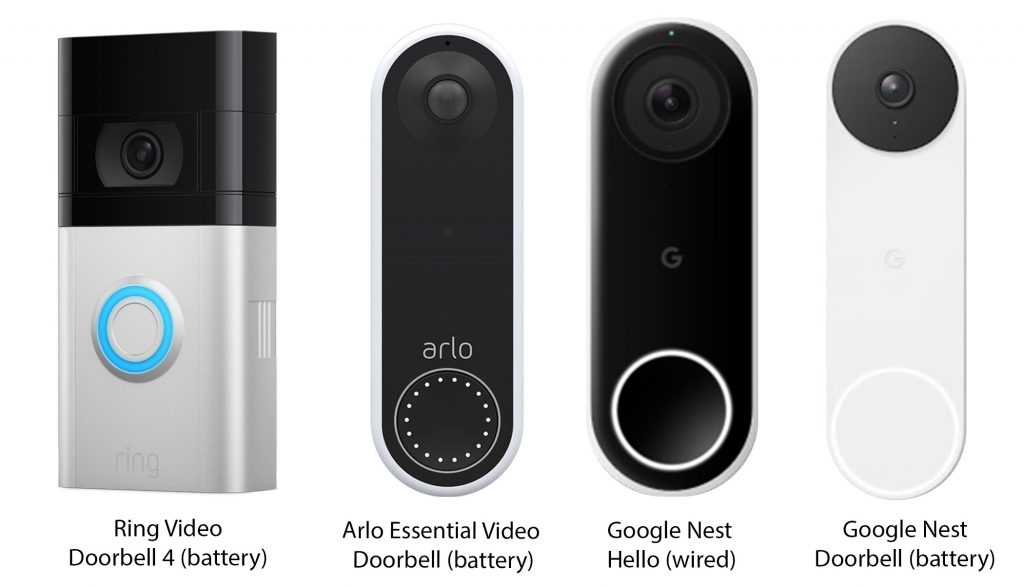

The introductory protocol tested the doorbell cameras for all relevant attributes of image quality. It pays particular attention to the attributes of exposure, detail preservation, and artifacts, as they are identified as the most important for the doorbell use cases. Installation, accurate detection, and audio were not evaluated. Videos were downloaded for analysis and were not evaluated via smartphone applications.
As the videos and illustrations will show, the doorbell cameras were tested in laboratory and real-life conditions. DXOMARK’s methodology combines both objective and perceptual evaluations to arrive at an overall assessment.
Let’s take a closer look at what DXOMARK’s laboratory and perceptual testing revealed about the image quality of doorbell cameras in three conditions: Daylight, Backlit, and Night.
Daylight use cases
When it comes to exposure in daylight conditions, with sunlight on the subject, faces were recognizable and accurately exposed in the images taken with the Google, Ring cameras. While faces were recognizable in the Arlo camera, they were overexposed. The Arlo tended to clip the face in very sunny conditions, because of high target exposure.
All cameras showed an acceptable level of detail in their images, but it depended on the subject’s distance from the camera. Identifying the individual was possible for close targets, but when the subject stood 2 meters or more away from the camera, facial details were almost completely lost. As the video shows, we have subjects approaching the camera from a distance in order to see how the level of details changes.
Some compression artifacts, such as blocking, can appear in the scene, especially with the subject’s movements. This happens when the video codec can’t keep up with the changing pixel information induced by the subject’s movement. More motion means more pixels have to change from one frame to another, and the more likely blocking could occur.
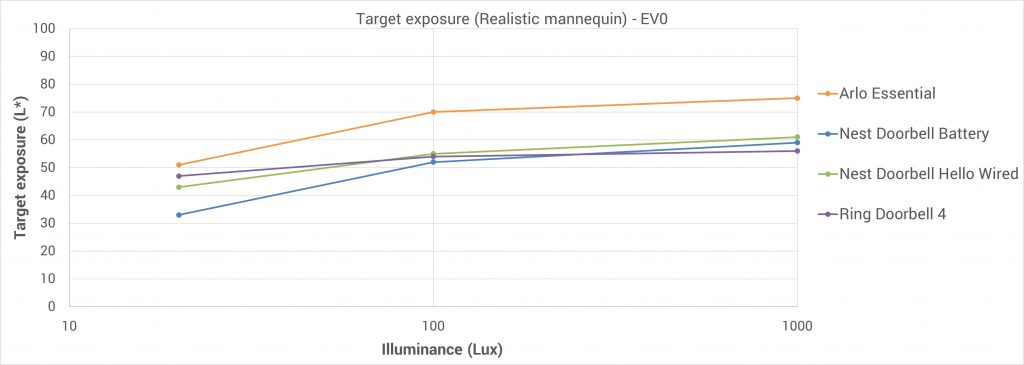
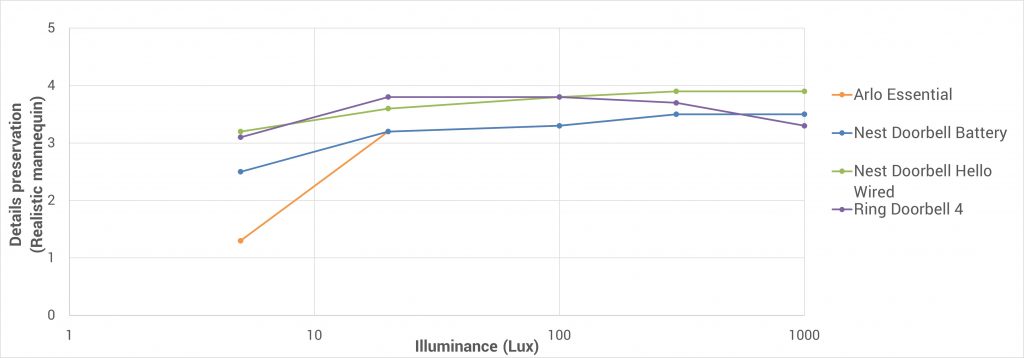
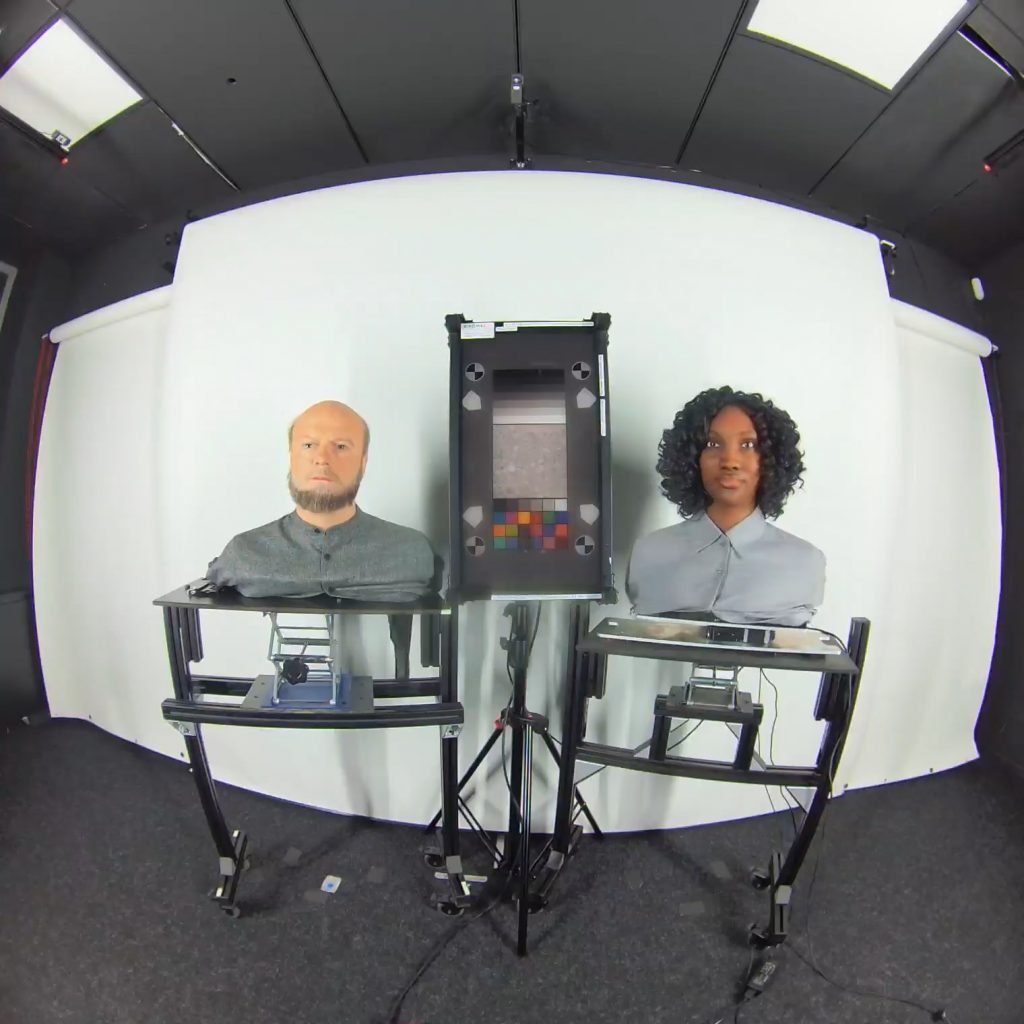

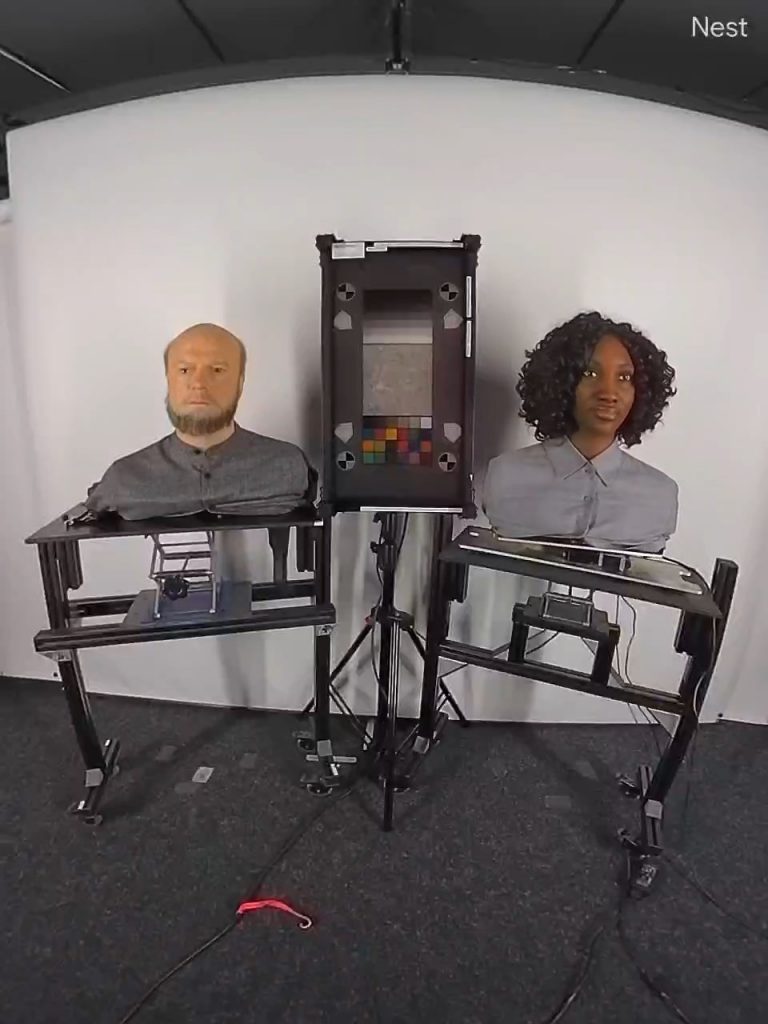

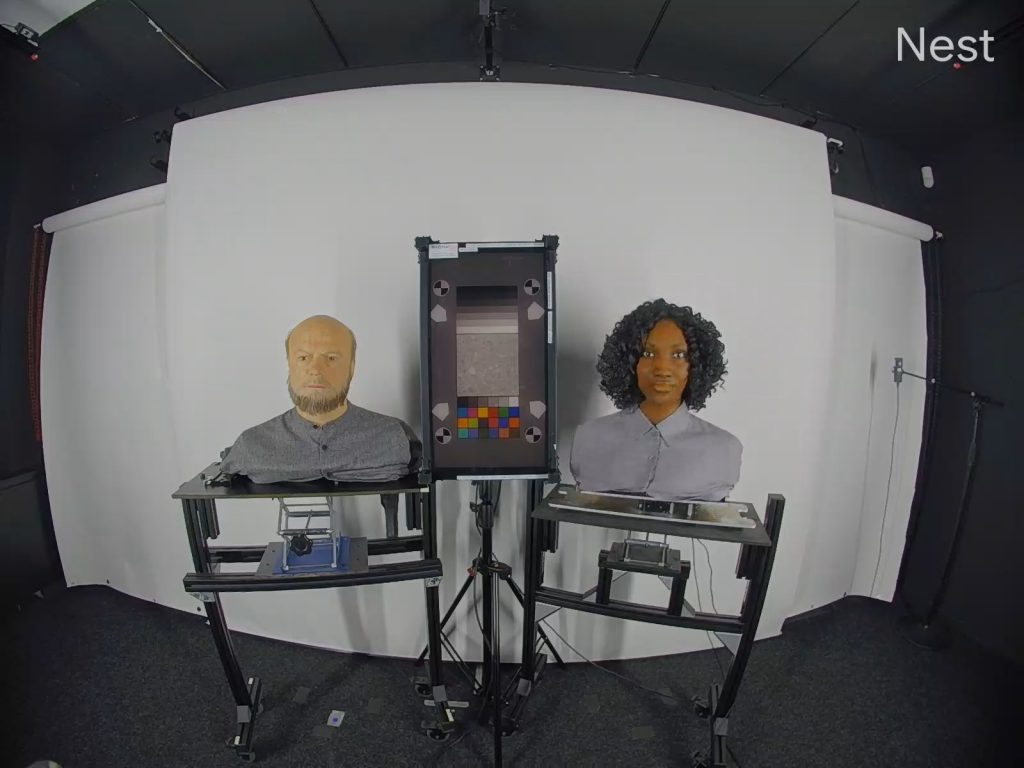

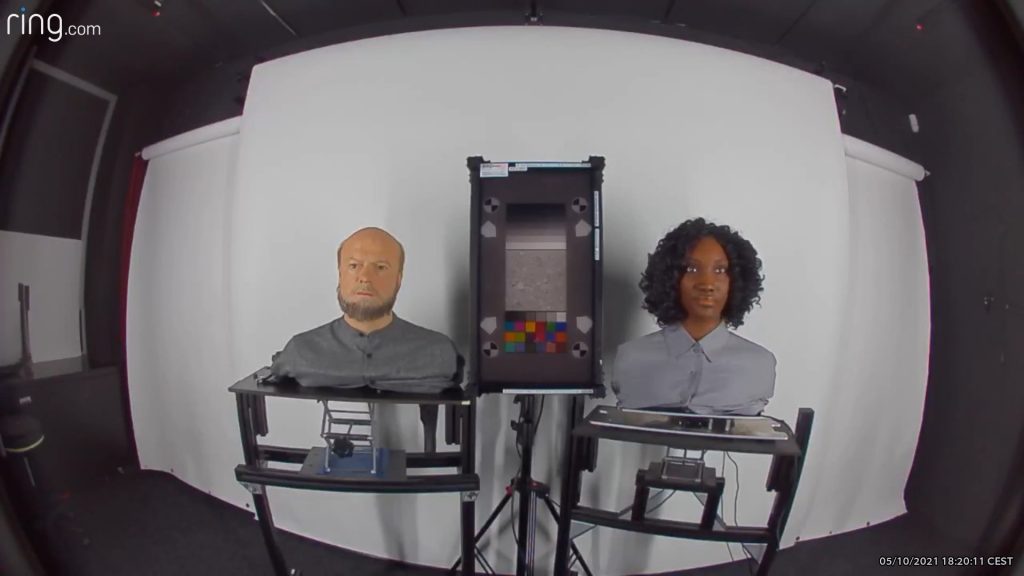

Challenging backlit conditions
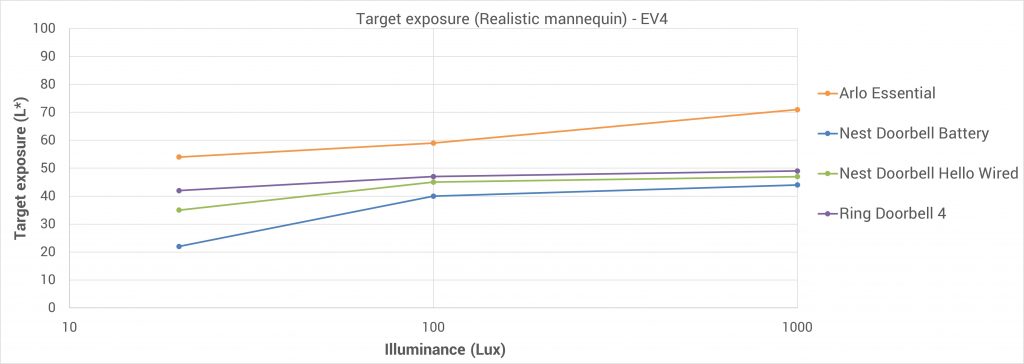
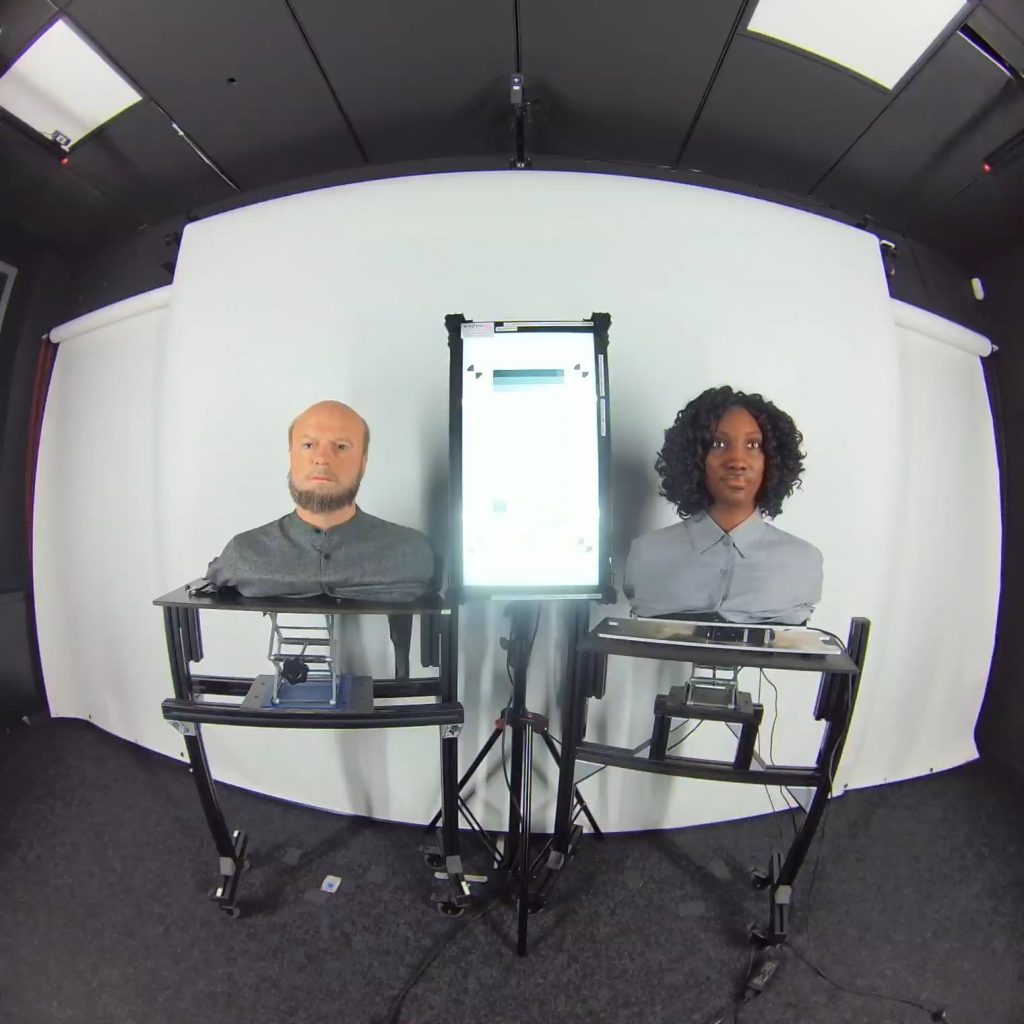
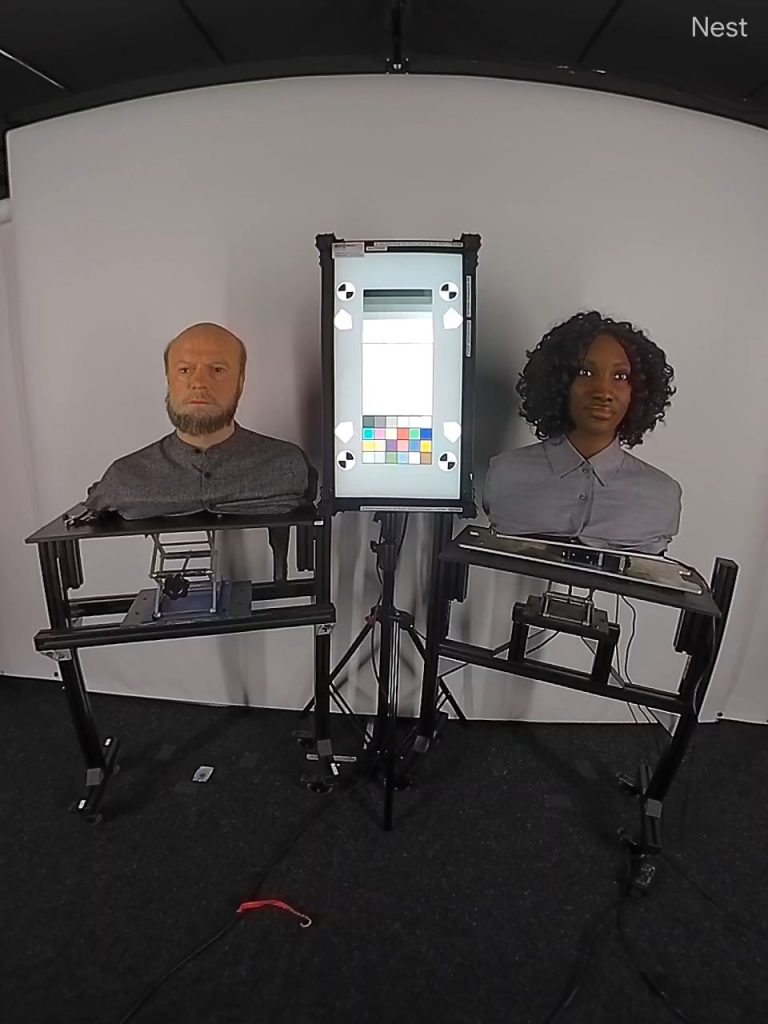
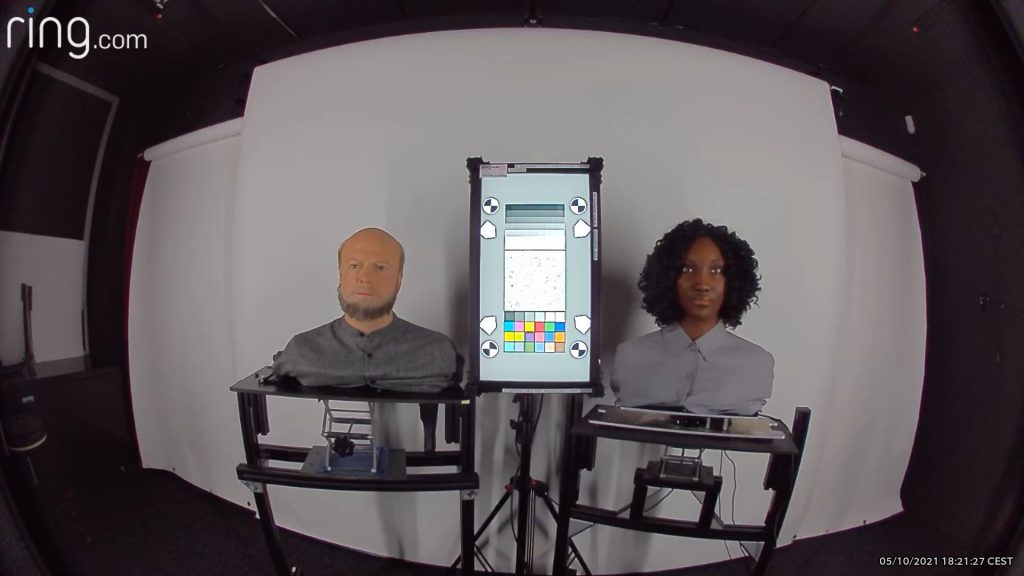
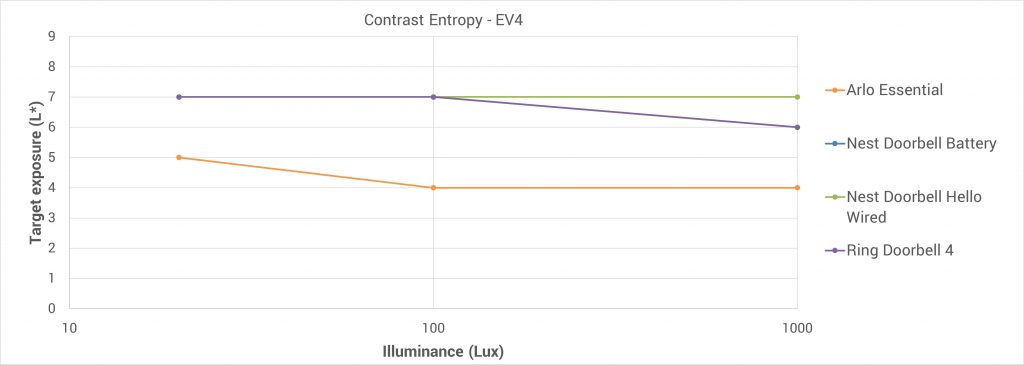
Night use cases
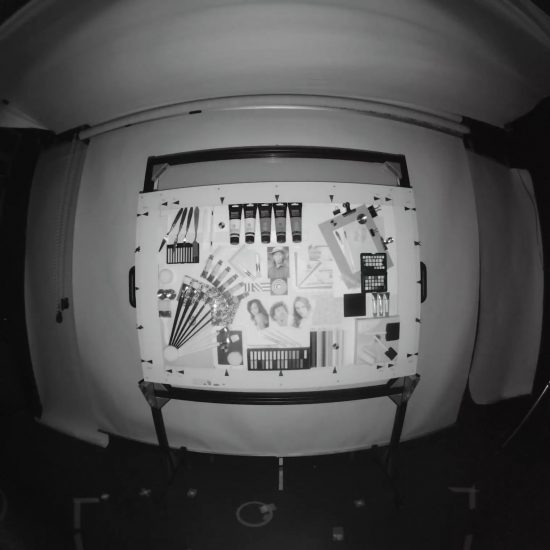
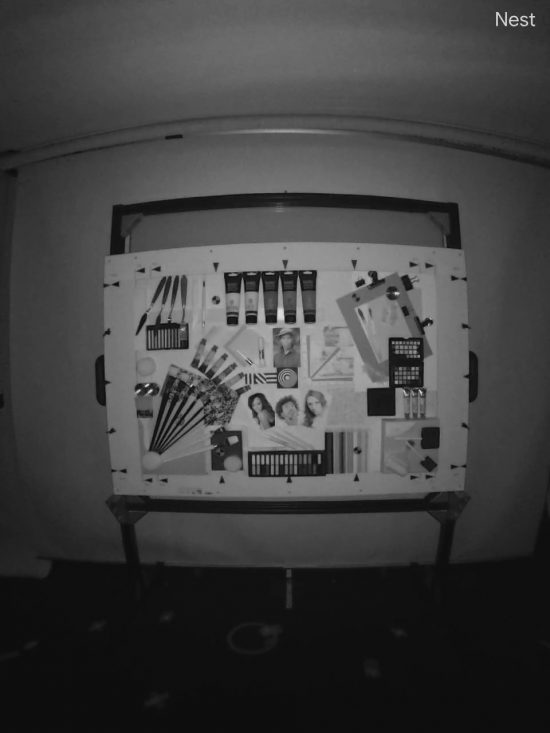
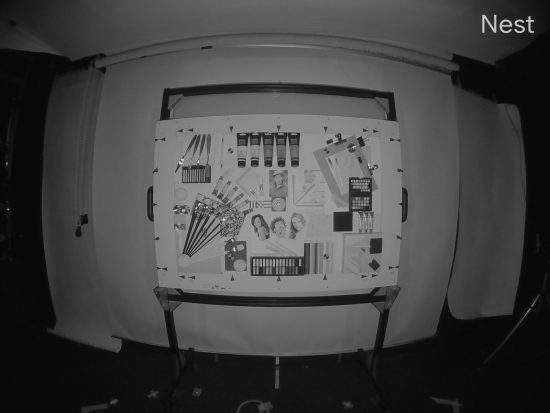
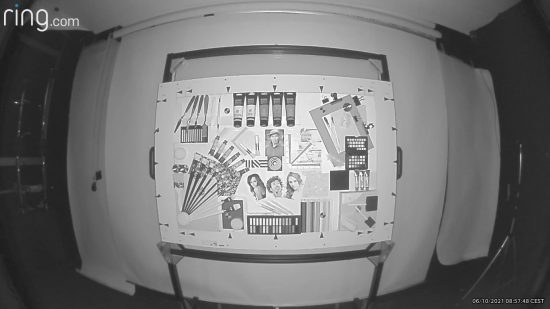
Conclusion
The DXOMARK doorbell camera protocol evaluates exposure, detail preservation, artifacts, and color, using our latest innovations in image-quality testing: ultra-realistic mannequins and laboratory illuminants that allow us to repeatably and accurately reproduce the conditions in which these cameras are used.
Based on our evaluations of one wired doorbell camera and three battery-powered ones, the Google Nest Hello (wired), gave better image results overall, providing high enough quality to identify people in most conditions, even at night. Overall, battery-powered doorbells held up well in comparison, but the Ring and Google Nest (battery) struggled when it came to low light and night conditions. Still, all doorbell cameras are challenged to some extent to provide correct exposure and facial details when confronted with HDR conditions such as sunsets or covered entrances.
We didn’t talk about color in this initial article, since accurate and pleasant colors on surveillance cameras are nice to have but are not a mandatory feature. In low-light conditions, the cameras switched to infrared mode, where color information is lost. But in the daylight use cases we tested, all cameras showed some sort of color casts in daylight use cases in both perceptual and lab testing.
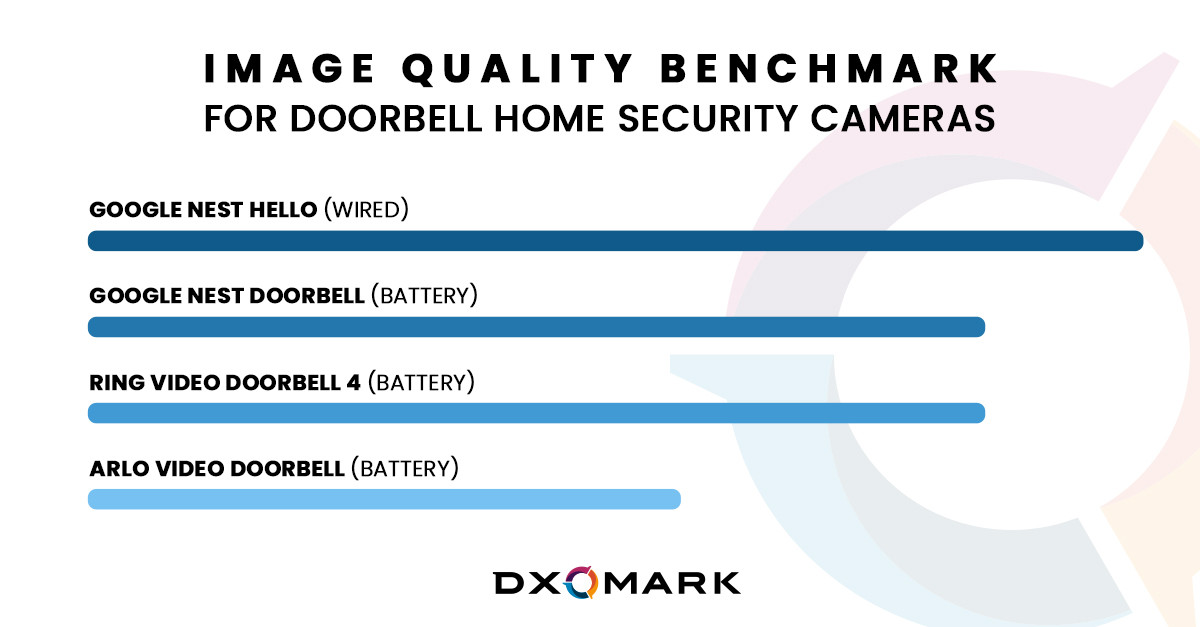


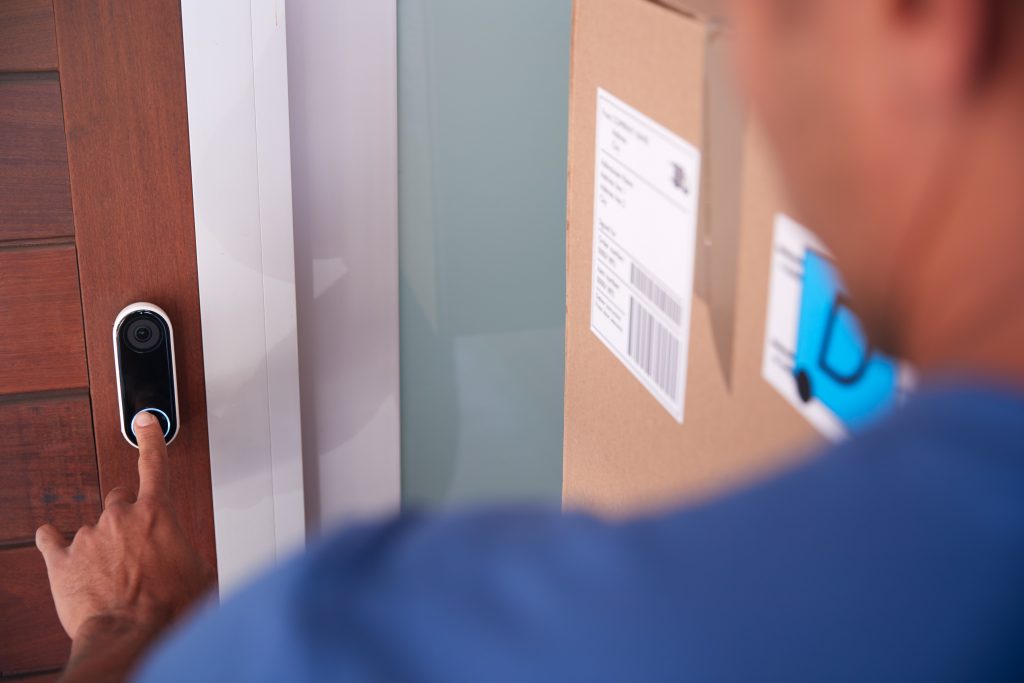
DXOMARK encourages its readers to share comments on the articles. To read or post comments, Disqus cookies are required. Change your Cookies Preferences and read more about our Comment Policy.